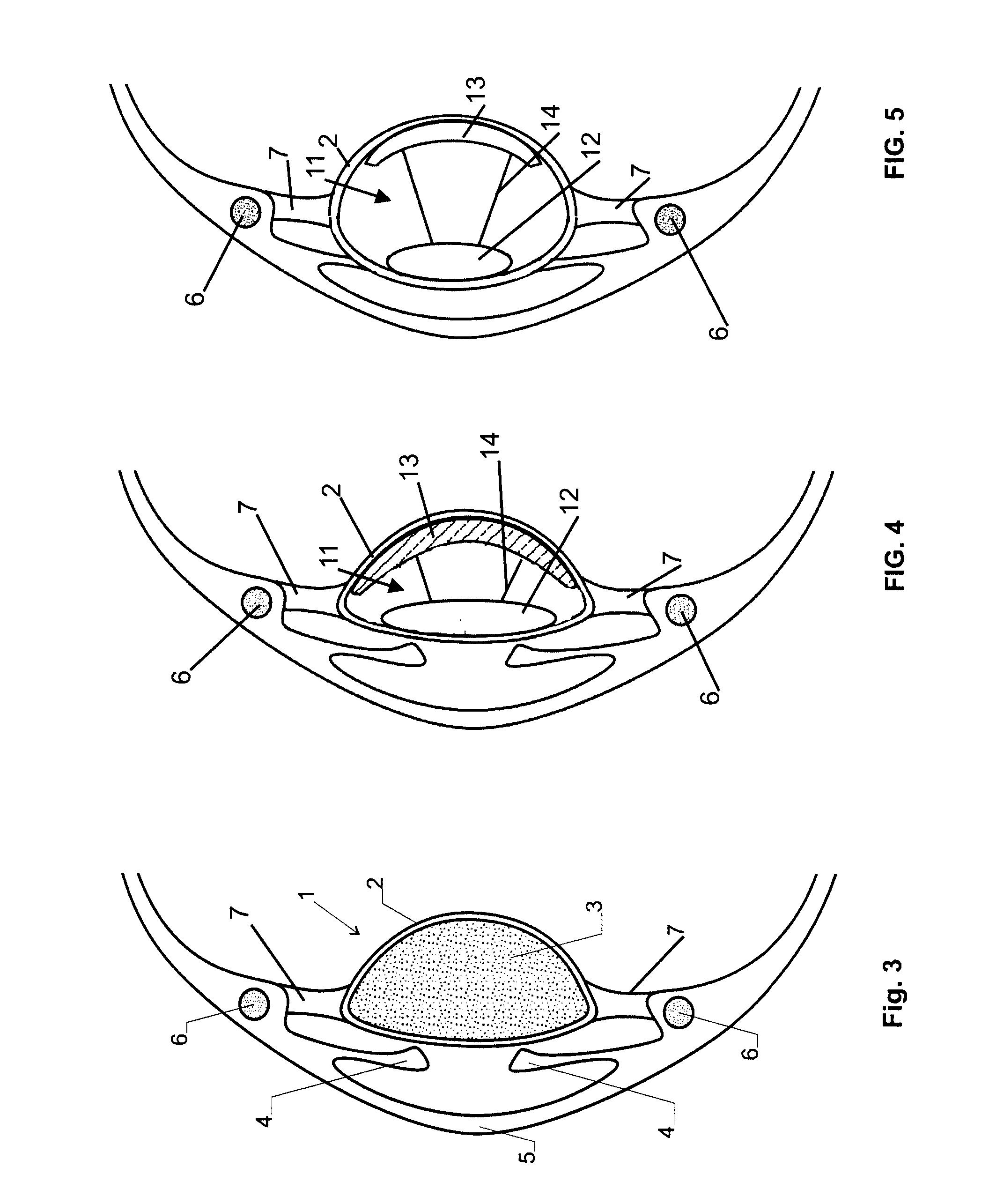Intraocular lens implant
a technology of lens implant and lens shell, which is applied in the field of intraocular lens implant, can solve the problems of difficult selection of lens implant materials, unsuitable shape of such lens implant, and inability to adapt to the two variants above, so as to prevent corrosion and clouding, and improve sustainability
- Summary
- Abstract
- Description
- Claims
- Application Information
AI Technical Summary
Benefits of technology
Problems solved by technology
Method used
Image
Examples
Embodiment Construction
[0028]Similar or relating components in the several figures may be provided with the same reference numerals.
[0029]In FIG. 3 it is referred to a simplified cross section of a front part of the human eye which comprises a cornea 5, an iris 4 and a lens 1 comprising a lens mass 3 arranged in a lens capsule 2. The lens 1 is connected via zonule fibres 7 to a ciliary muscle 6. The ciliary muscle 6 takes the form of a ring that may contract and relax. A contraction of the ciliary muscle6 shall lead to accommodation which is understood as the eye focusing to an object in the near vision. Relaxation of the ciliary muscle 6 shall lead to a less accommodated state also referred to as unaccommodated state in which the eye is prepared for distant vision.
[0030]In a state in which the lens 1 is adapted for distant vision, the ciliary muscle 6 is relaxed as shown in FIG. 3. In such state the zonule fibres 7 are tense and pull the edge of the lens capsule 2 radially outwards such that the lens 1 t...
PUM
 Login to View More
Login to View More Abstract
Description
Claims
Application Information
 Login to View More
Login to View More - R&D
- Intellectual Property
- Life Sciences
- Materials
- Tech Scout
- Unparalleled Data Quality
- Higher Quality Content
- 60% Fewer Hallucinations
Browse by: Latest US Patents, China's latest patents, Technical Efficacy Thesaurus, Application Domain, Technology Topic, Popular Technical Reports.
© 2025 PatSnap. All rights reserved.Legal|Privacy policy|Modern Slavery Act Transparency Statement|Sitemap|About US| Contact US: help@patsnap.com



